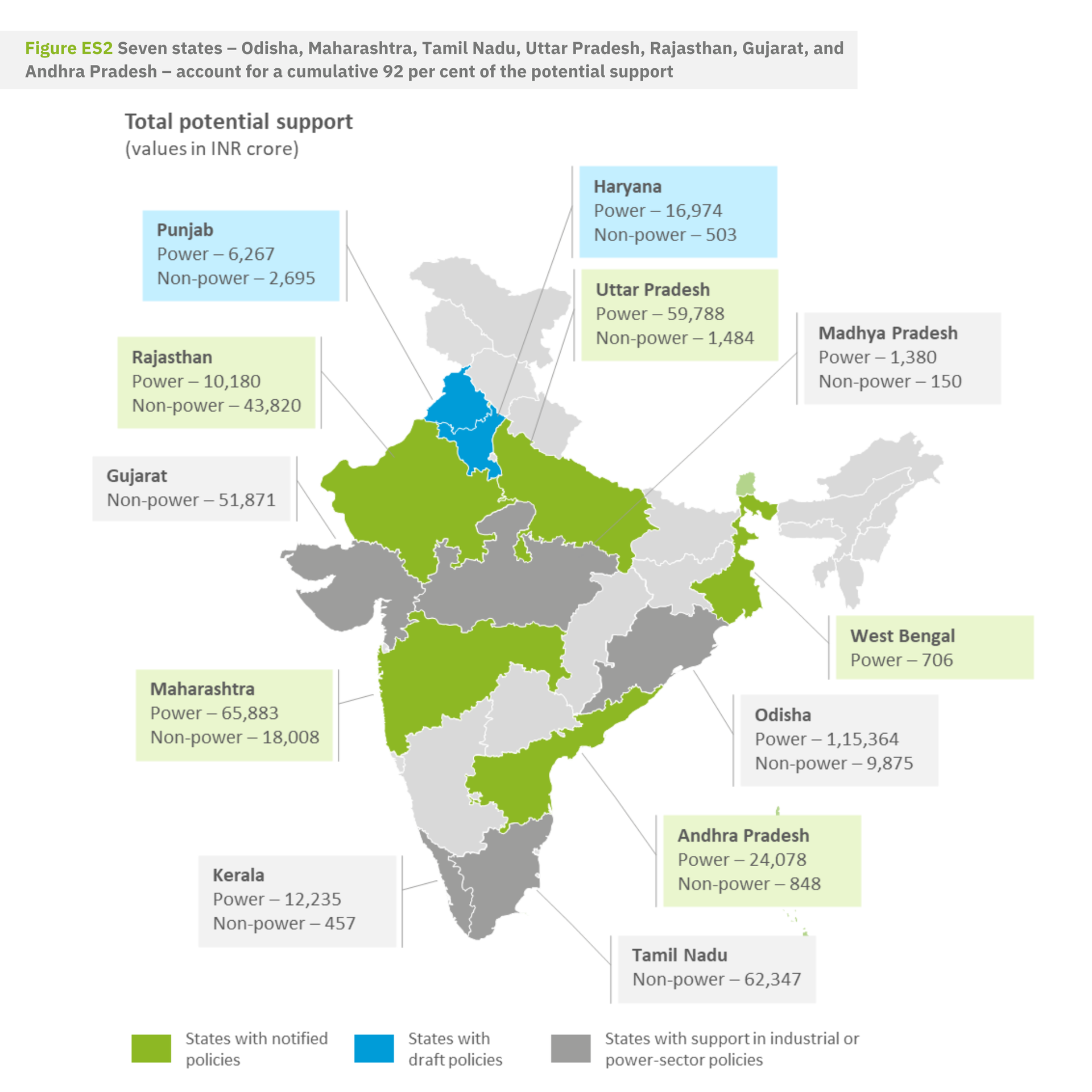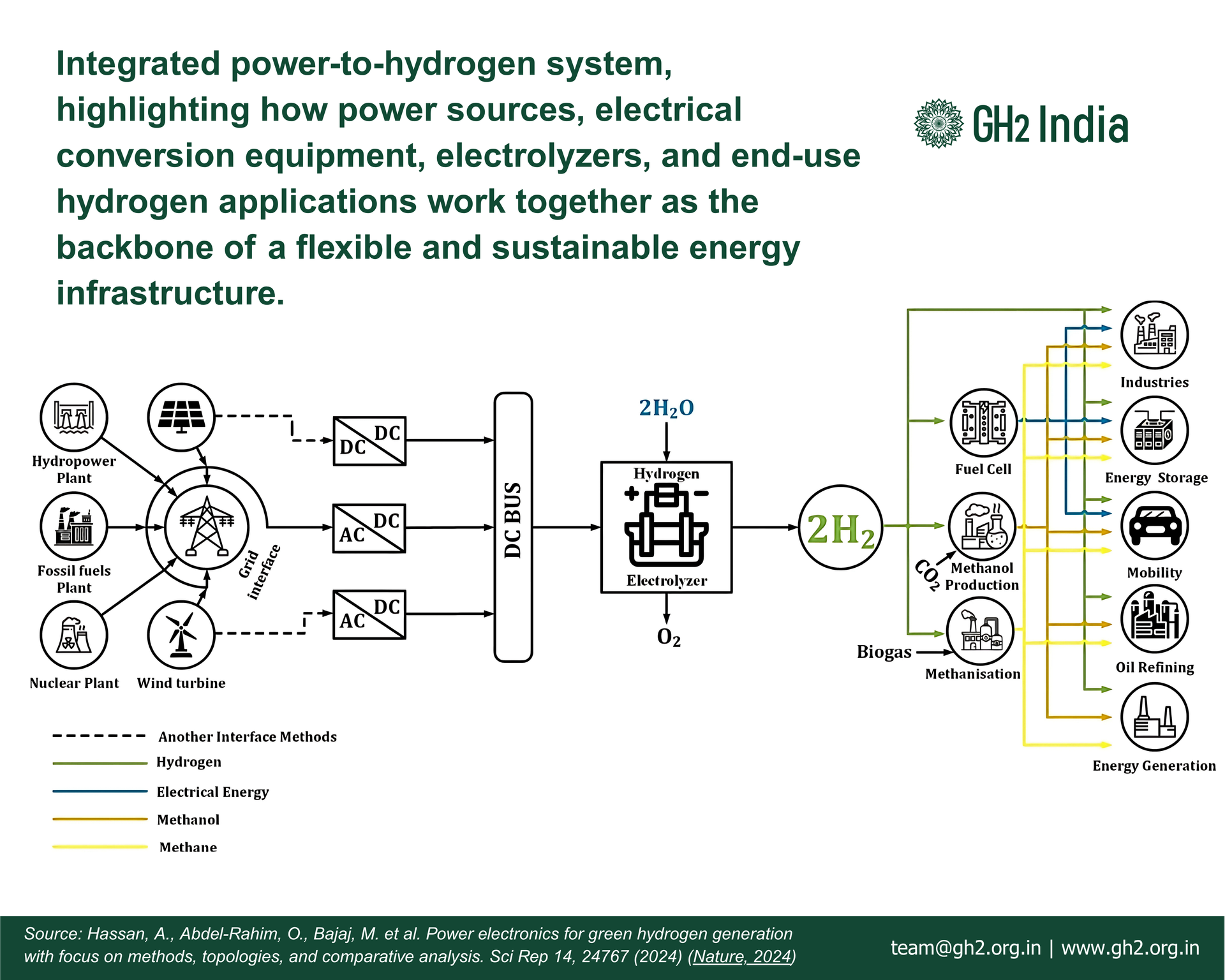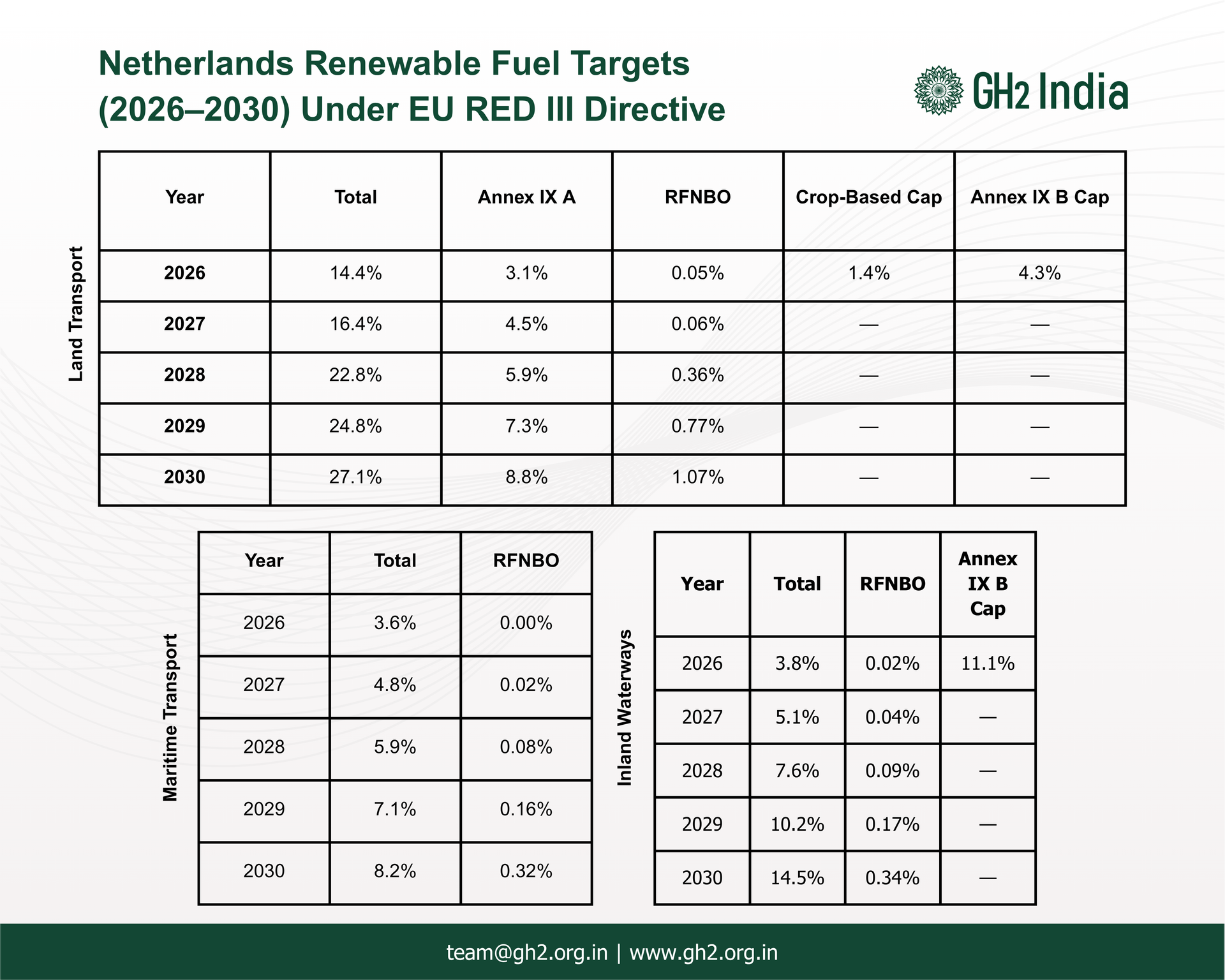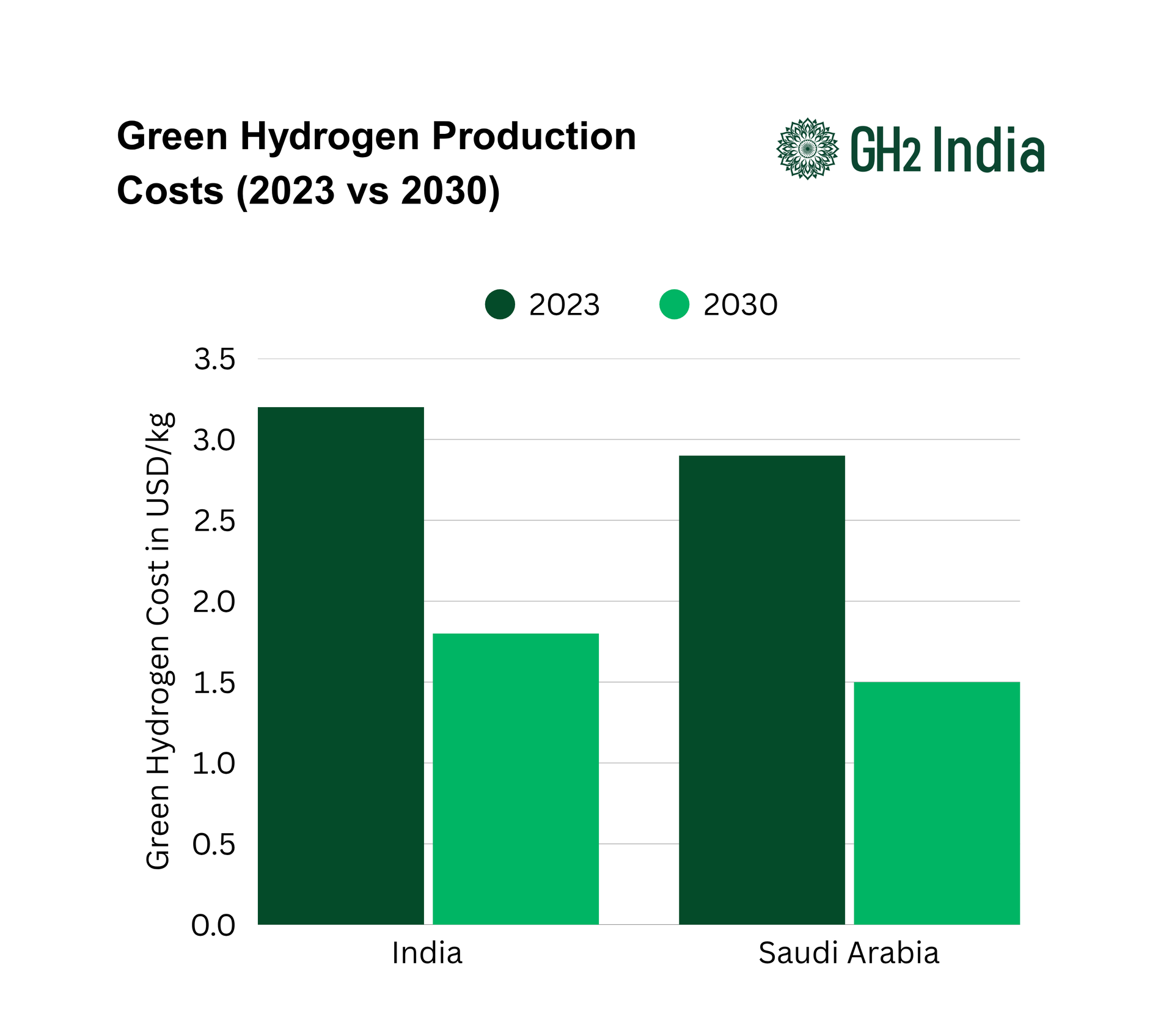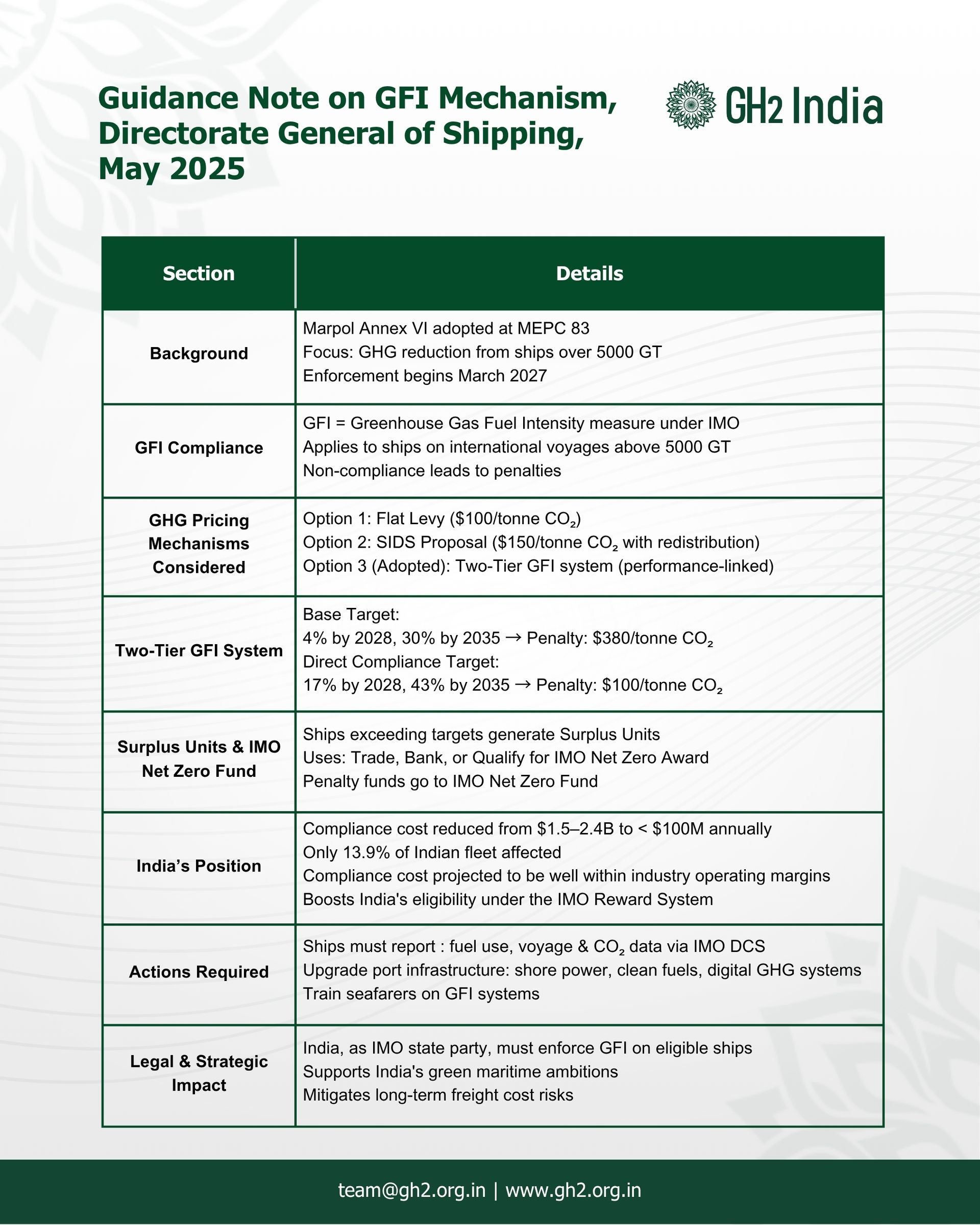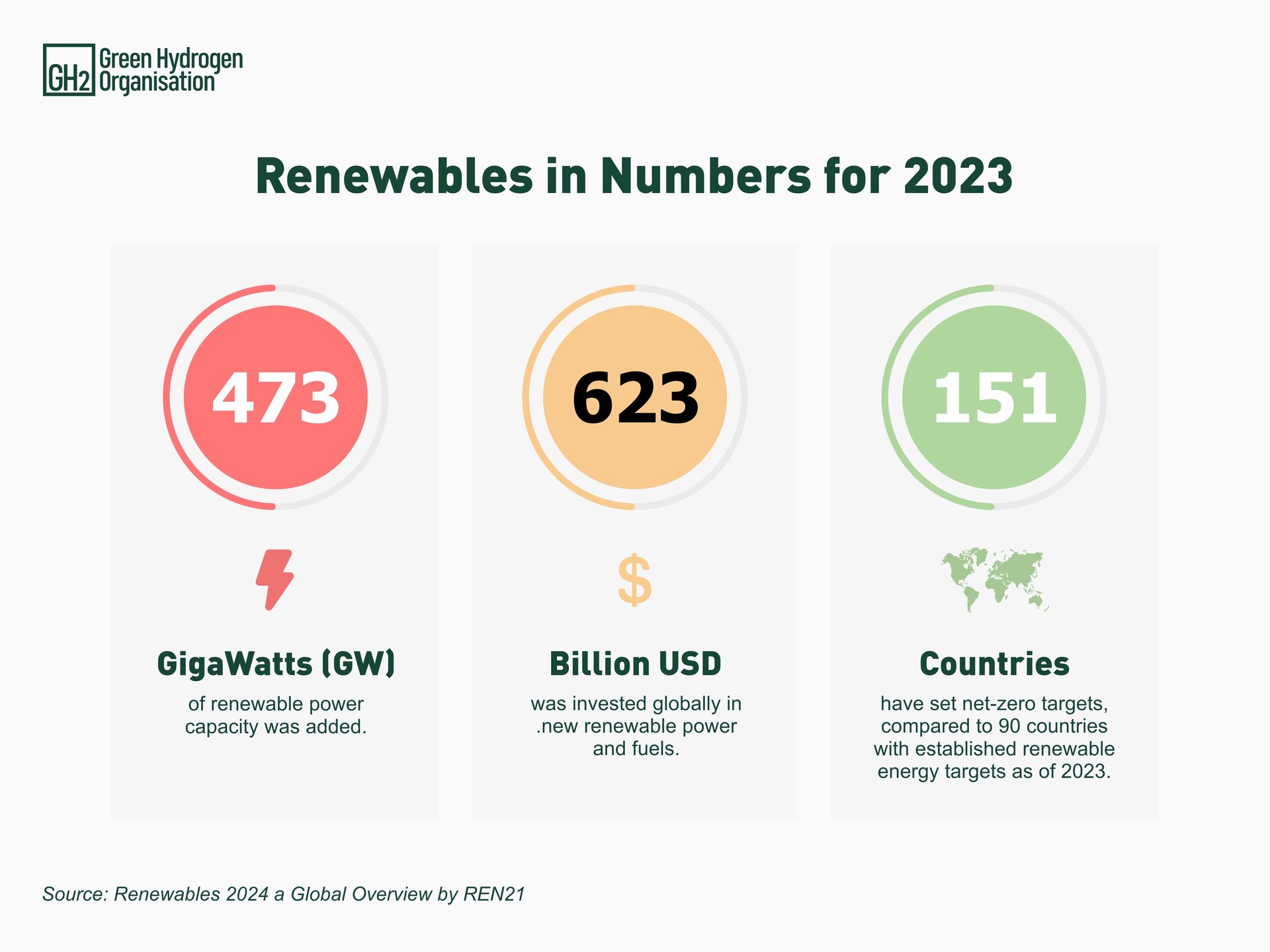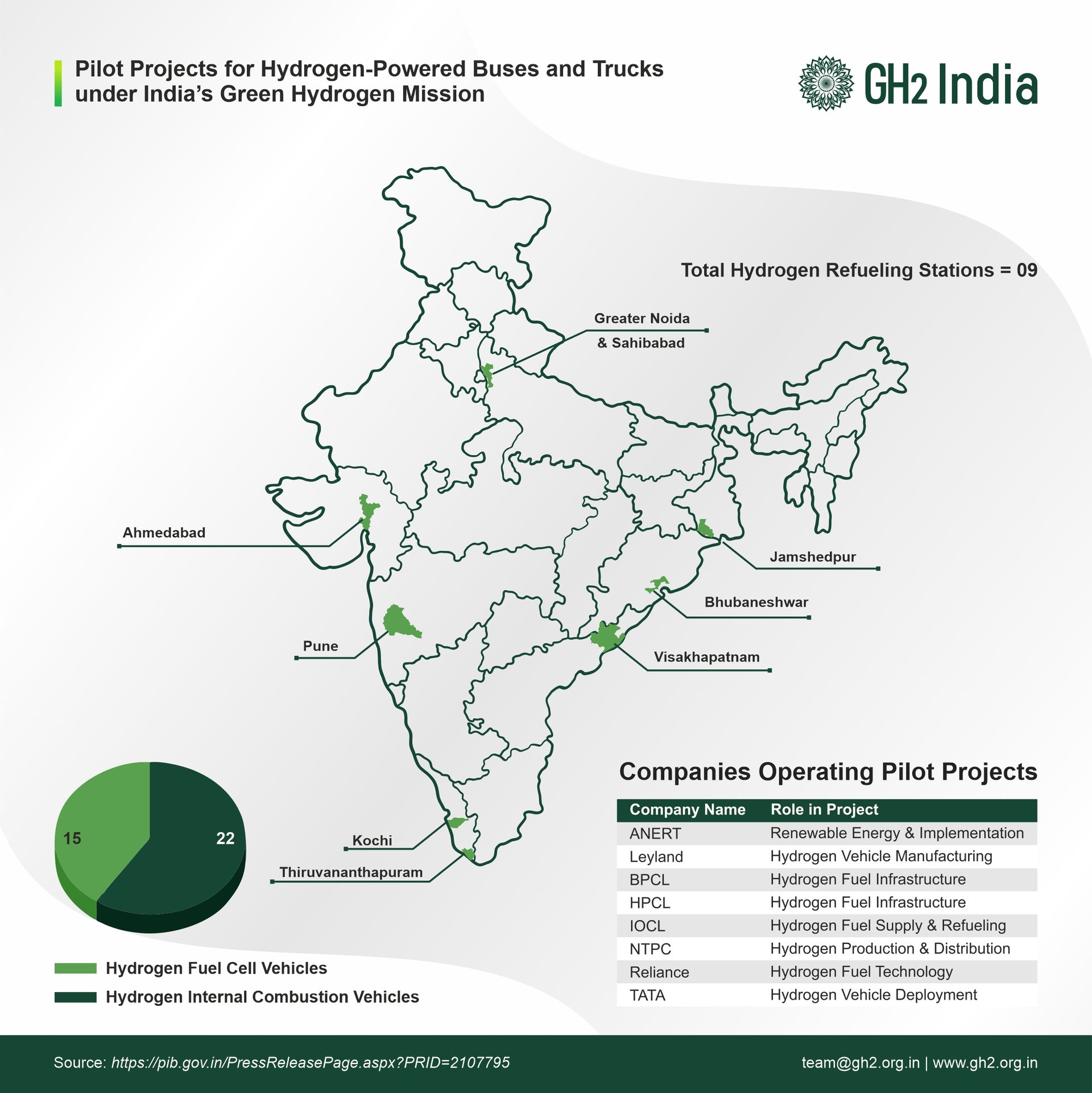State-wise distribution of green hydrogen incentive support in India (CEEW, 2025)
India’s green hydrogen incentive ecosystem now stands at over USD 60 billion in potential support, a figure that dramatically expands the country’s clean energy ambitions beyond the headline-grabbing National Green Hydrogen Mission (NGHM). A recent study by the Council on Energy, Environment and Water (CEEW) quantifies this combined support, noting that state- and central-level policies embed nearly ₹5.05 lakh crore in incentives, approximately 26 times the NGHM’s budget of ₹19,744 crore (CEEW, 2025, p. 4).
India has set some of the world’s most ambitious green hydrogen targets and is rapidly backing them with policy muscle. The National Green Hydrogen Mission aims to drive both demand and supply. Complementing this, the Ministry of Power’s Green Hydrogen Policy eliminates interstate transmission charges and simplifies renewable sourcing for green hydrogen projects.
Crucially, this central push is amplified by states. Authors of the report note that state-level policies embed around ₹5.05 lakh crore in incentives, 26 times the NGHM budget (CEEW, 2025, p. 4). In effect, India has created a vast green hydrogen subsidy pool. Seven states, Odisha, Maharashtra, Tamil Nadu, Uttar Pradesh, Rajasthan, Andhra Pradesh, and Gujarat, account for over 90% of this ecosystem (CEEW, 2025, p. 5).
The structure of these incentives matters. Around 62% target power costs through tariff, transmission, and duty waivers. The remaining 38% supports capex and finance via capital subsidies and interest subvention (CEEW, 2025, p. 4). This dual-layered design improves both upfront project viability and long-term economics. For instance, Maharashtra offers a ten-year waiver on intra-state transmission charges, while Gujarat and Tamil Nadu focus on non-power subsidies through industrial policies.
State-level policies also show notable diversity in approach. Odisha stands out with an estimated ₹1.25 lakh crore (USD 15 billion) in incentives, driven by ₹3/unit power tariff rebates and a 30% capital subsidy for green hydrogen projects (CEEW, 2025, p. 26). Rajasthan, meanwhile, is the only state where non-power incentives exceed power-related ones, anchored in a production target of 2 MTPA and deep solar capacity (CEEW, 2025, pp. 4, 32). Maharashtra blends both, offering tenures of 10 to 20 years for duty and wheeling charge waivers, and direct support for hydrogen-based mobility (CEEW, 2025, p. 27). These variations underscore that states are not merely mirroring the NGHM but actively tailoring strategies based on industrial strengths, land availability, and RE profiles.
India’s edge lies in its cheap renewable energy, but green hydrogen still costs ~$3.5–5/kg, compared to ~$2/kg for grey hydrogen. Current incentives could cut this gap by up to $1.8/kg (CEEW, 2025, p. 6). Globally, the U.S. offers up to $3/kg in tax credits, the EU has committed €3 billion via its Hydrogen Bank, and Australia’s Hydrogen Headstart provides A$2 billion in grants. While others favour tax breaks or auctions, India’s direct fiscal support offers immediate certainty, making it a serious player in the global hydrogen race.
India has drafted a bold playbook that competes with other peers in the sector, but policy alone won't ensure success.
The real test lies in execution. Rapid project clearances, waiving power banking charges, reducing GST on electrolysers, efficient Centre–State coordination, and streamlined access to affordable renewable energy are now crucial. By swiftly addressing these challenges, Indian stakeholders can capitalise on their ambitious incentive framework and local advantages to emerge as a global leader in green hydrogen. Experts suggest these steps could cut green hydrogen prices by another $2/kg, bringing them within striking distance of grey. The window of opportunity is open, but policymakers and industry must move decisively to seize it.
Reference :
Council on Energy, Environment and Water (CEEW). (2025). Augmenting the National Green Hydrogen Mission: Assessing the Potential Financial Support through Policies in India. New Delhi: CEEW. Retrieved from https://www.ceew.in/publications/green-hydrogen-incentives-report
